Matador Network's Blog, page 602
August 26, 2021
8 luxury hotel bars in Rome where you can sip in opulence

With its rich history, gorgeous architecture, and delicious cuisine, it’s no wonder Rome is called The Eternal City. A trip to Italy’s capital is a truly magical experience, whether you’re there to tour the ruins and museums, shop the boutiques on Via del Corso, or get your fill of cacio e pepe, Roman-style pizza, and carciofi alla Romana. Hotels are often the home base for travelers to the city, and there’s no shortage of accommodations that’ll have you living a life of luxury.
Thankfully, you don’t have to have an overflowing bank account to get a taste of the aforementioned grandeur. Even if you’re not staying at one of Rome’s most luxurious hotels, you can still experience the splendor by splurging on fabulous Italian cocktails in a decked out hotel bar. These eight luxury hotel bars are some of the best in the city, perfect for an early evening aperitivo or digestivo to punctuate a day of living la dolce vita.
1. Lumen Garden at The St. Regis RomeThe St. Regis is known for its impeccable service, opulent afternoon tea, and evening Champagne sabering. But the hotel is also known for its cocktails — the bloody mary was invented at the New York St. Regis location in 1934, after all. The St. Regis Rome is one of the city’s finest hotels, and its lush Lumen Garden is an oasis from the hustle and bustle of the ancient city. It’s known for its aperitivo and serves signature cocktails in bespoke glassware designed by contemporary artists. Try the atollo, a mix of Champagne, Italicus Bergamot Liqueur, Cocchi Americano, lemon juice, simple syrup, and gin, served in a shimmering coupe. Or go for the red admiral, the hotel’s bloody mary variation that’s prepared and served tableside.
2. Tiepolo Bar at Rome Cavalieri, A Waldorf Astoria Hotel
Photo: Rome Cavalieri, A Waldorf Astoria Hotel
Even if you’re not resting your head at Rome Cavalieri, there are a few great ways to enjoy the property. You can book a spa treatment and experience the hotel’s stunning Roman baths, or spend your day lounging by the outdoor pool, which is surrounded by lush flora. But the best way to experience this grand hotel without booking a room is to settle in for a cocktail at Tiepolo Bar, where you’ll find a sumptuous lounge that features gilded details and a prized collection of Venetian artwork. Settle in for an evening negroni while resident pianist Jaffa fills the room with lively jazz, or head there for afternoon tea or a grapefruit collins on the terrace. Whatever you choose to do, Tiepolo Bar is a must-visit when in Rome.
3. The Court Bar at Palazzo ManfrediPalazzo Manfredi is located a few meters from the remains of Ludus Magnus, a gladiator training school that primed fighters for their moment at the Colosseum. And there’s no better way to soak in that view than by sipping a libation at The Court Bar. Behind the stick is Matteo Zed, who wrote a book about amari and is known for his cocktails throughout the world. The Court Bar menu is vast, and the cocktails are divided into sections like fat washing and fermentation & clarification. Try the black mamba, a tropical mix of Appleton Reserve, Diplomatico Reserva Exclusiva, Underberg, salty peanut orgeat, tamarind, lime juice, and banana.
4. Hassler Bar at Hassler Roma
Photo: Hassler Roma
Hassler Roma overlooks the Spanish Steps, giving it both great views and great drinks, and is one of the most elegant locales in the city. Every corner of the property is lovely, but the cozy, clandestine Hassler Bar makes for a memorable evening. Outfitted in rich dark wood, red leather upholstery, and gilded details, the glamorous surroundings conjure the mood of a bygone era. If you’re looking for an aperitivo, Hassler Bar’s signature veruschka — a refreshing mix of pomegranate juice and Italian sparkling wine — is an excellent pre-dinner libation.
5. Stravinskij Bar at Hotel de RussieHotel de Russie is one of the most elegant enclaves in Rome, with its uniquely designed suites, luxurious saltwater hydropool, and tiered secret garden. At the center of it all is Stravinskij Bar, an award-winning cocktail destination surrounded by lush groves of pine and citrus trees. The cocktail menu has a drink for everyone, whether you’re in the mood for a spritz, martini, gin and tonic, or mocktail. Come for aperitivo hour and snack on stuzzichini like calamari with squash blossoms while you sip an expertly-made libation. A classic sbagliato or negroni will whet your appetite for dinner, while a signature drink like the little Italy—made with grappa, pineapple cordial, lemon, mint, and chamomile bitters—will give you a taste of the bar’s distinct style.
6. Il Giardino Bar at Hotel Eden
Photo: Hotel Eden
When Hotel Eden opened in 1889, it was the first hotel in Rome to feature an elevator, electricity, and running water. Now the property is known for its sophisticated accommodations, Michelin-starred restaurant, and collection of curated artwork. One of the rooms to especially take note of in the hotel is Il Giardino Bar, a sleek space with sweeping views of the city where you can watch the sunset while listening to live music. Stop by for aperitivo hour and grab a selection of cicchetti (Italian small plates) like fried and stuffed zucchini blossoms and bruschette with mozzarella and anchovies. Pair the salty snacks with la grande bellezza, a fiery hued cocktail made with tamarind-infused rosé vermouth, mandarin, and mezcal.
7. JKBar at J.K Place RomaThis luxury boutique hotel is set inside a Roman townhouse that’s part of the 17th century Palazzo Borghese, and it’s within walking distance of sights like Piazza di Spagna and the Trevi Fountain. Every corner of J.K. Place Roma is lovely, but JKBar is something special. Plush upholstery, dark wood paneling inspired by Tom Ford’s A Single Man, and shelves of hardback books set the tone for a cozy cocktail hour, complete with snacks like tomato and mozzarella suppli. The thoughtfully made and garnished cocktails are almost too pretty to drink. Try the signature J.K. sour that’s made with Disaronno, lemon, and passionfruit.
8. Acquaroof at The First Roma Arte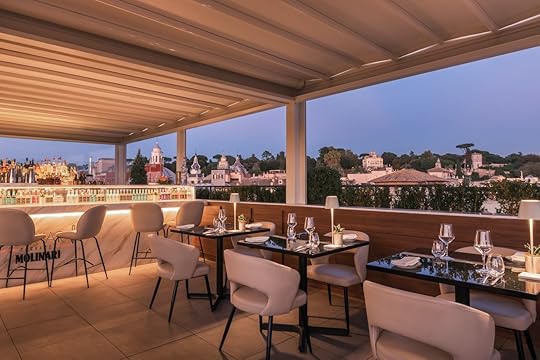
Photo: The First Roma Arte
If visiting every art gallery in a destination is your idea of a great vacation, The First Roma Arte is the hotel for you. Guest rooms are adorned with contemporary Italian artwork, and suites come outfitted with touches like marble fireplaces and private jacuzzi terraces. But if you’re only stopping by for a drink, you’ll get some of the best panoramic views in the city at Acquaroof. Whether you visit for lunch, aperitivo, or indulge in a dinnertime tasting menu, the cocktails at this rooftop garden do not disappoint. If you’re in a martini mood, try the signature message in a bottle, which is mixed with Acquaroof’s homemade vermouth.
The post 8 luxury hotel bars in Rome where you can sip in opulence appeared first on Matador Network.
10 things nude beach regulars wish you’d stop doing

Clothing-optional beaches in the US offer a liberating sense of au natural freedom, all while savoring a day out on the sand. These in-the-buff destinations are diverse and scattered throughout the States; from Florida’s nudist party scene to the laid back naked surfers of California and Hawaii. And while technically, public nudity is punishable by law there are a few states that bend the rules for beach-goers.
But that doesn’t mean there are no general rules of nude beaches you’re expected to follow while warming your nether regions.
I’ve visited nude beaches and clothing-optional hot springs from coast to coast. I’ve stripped down to my birthday suit on packed Miami shores, secluded cliff sides of California, mountain treks in Washington, skin-soothing sulfur ponds of Colorado and New Mexico, and the family-friendly sands of Massachusetts. Throughout my interactions with members of the nudist community and beach regulars, I compiled a list of the universally accepted rules all nude beach regulars wish newcomers were aware of. Here are some of the unwritten rules of nude beaches and things nude beach regulars wish you would stop doing.
1. Feeling like you have to bare it allUndress only to your comfort level. Whether that means donning a revealing bikini, topless tanning, or stripping buck naked straight out of the gate — the choice is up to you. After all, in the US most “nude” beaches are clothing-optional. There’s no judgment here if you’re not ready to lose your bottoms.
2. Assuming every nude beach has the same vibeJust like traditional beaches, every nude beach is different. Before you go to a new-to-you nude beach, be sure to do your research on that particular stretch of sand. Some beaches tend to draw a community of regulars that use this time in the sun as a social hour. Some are particularly popular with the LGBTQ community, some with families or those seeking a quiet refuge to sunbathe in solitude. Simply reading the reviews on Yelp can reveal a lot about the clientele. Or browse the small list of beaches that the Naturist Society has put together that adhere to their strict social guidelines of “respecting boundaries, the people, and the beach itself”.
3. Sitting far too close to your fellow beach-goersYour towel is your happy place. The only strip of privacy you have to retreat to after strutting down the sand in the buff. If there’s a huge stretch of open sand and you place your towel within five feet of me, you’re breaking one of the unspoken rules of bare it all beaches. Depending on the beach’s particular social environment, some people like to mingle and you might be coaxed into an au natural small talk session. But don’t encroach on anyone’s sacred towel space.
4. Taking photosWhile technically there are no “official” laws against taking photos of any kind on nude beaches, there is a social code of conduct. You should never photograph anyone without their explicit permission. While regulars understand that you may want to snap a selfie of this uncommon experience, be extra careful that you’re not capturing your unwitting neighbors in the buff. You can always move to a more secluded portion of the beach to take scenic photos or face the waves instead of the crowd.
5. PDAThe one written rule of clothing-optional beaches is no lewd conduct. Nude beaches are not your foreplay. They are not meant to be erotic and any sexual acts or heavy petting are not welcome in the community. A good rule of thumb is — if you wouldn’t do it on a family-friendly beach, don’t do it here.
6. Hitting on your fellow beach-goersEnough said. I’m not saying you can’t find true love naked, but you should always respect the boundaries of those around you. Try to be particularly receptive of social cues to avoid coming off as creepy. And you absolutely should not visit a nude beach expecting to come home with a phone number.
7. StaringI don’t want to harp on respecting boundaries, but according to the American Association for Nude Recreation, there’s nothing more important than respecting yourself, others, and the beach. Staring can make people uncomfortable. It’s as simple as that.
8. Stretching or working out in front of the beachYou know when you sit in an empty movie theatre and the group who comes in after you chooses the seats directly in front of you, right in your line of view of the screen. It’s like that. But naked. Add in your beach workout or yoga routine and your fellow beach-goers are getting to see a lot more of you than they bargained for. The polite choice would be to choose a more secluded section of sand or seat yourself toward the back of the beach.
9. Making a huge fuss over families sunning at nude beachesIn many cultures all around the world, nudity isn’t in itself a sexual state of being. Many families who want to raise their kids with a healthy relationship to their natural state often frequent clothing-optional beaches. That being said if you plan to bring your children to a nude beach, be sure to do your homework and ensure that the beach in question seems to be a kid-friendly place. You should always visit on your own beforehand and use your best judgment.
10. Being so self-consciousEasier said than done, but remember birthday suit beachgoers have seen it all. No amount of body hair, cellulite, or sagging is going to surprise anyone here. Considering the average age of beachgoers at most US clothing-optional shores is closer to 50 than 20, regulars are often very comfortable in their au natural state. Full bush, no bush, scars, warts and all, the human body is a powerful vessel and nude beaches can be a great way to build self-confidence and practice self-love. 
The post 10 things nude beach regulars wish you’d stop doing appeared first on Matador Network.
August 25, 2021
The FAA’s new threatening commercial wants you to know ‘unruly behavior doesn’t fly’

As reports of unruly passengers on flights increase, the Federal Aviation Administration has developed creative ways to inform flyers about its new zero-tolerance policy, including memes and a commercial that uses kids to condemn the behavior. But the FAA’s latest video takes a more grim approach, using the voices of pilots reporting incidents and how that can be a distraction during the flight.
New Unruly Passenger Numbers since 1/1/2021:
– 3,988 unruly reports
– 2,928 refusing to wear a mask reports
– 693 investigation initiated
– 132 cases with penalties
Learn more at https://t.co/UpB2VL14s9.#FlySmart pic.twitter.com/yEMvPoaR1j
— The FAA ✈️ (@FAANews) August 24, 2021
Gloomy music in the background is accompanied by sounds of an incident occurring in the cabin. At the same time, pilots are heard over the airways saying things like: “We’ve got a disruptive customer in the back,” “We’d like to divert,” and “We need to get off the airplane.” The ending states, “You don’t want your pilots distracted. Unruly behavior doesn’t fly.” It’s unconfirmed whether the audio is from real or staged incidents.
The 3,988 reports of unruly passenger behavior listed in the tweeted video include nine passengers that hadn’t been reported in the press release just five days prior. Over 73 percent of cases are due to flyers who refuse to wear their mask. The refusal breaks a Centers for Disease Control and Prevention (CDC) order passed in 2020 that requires masks to be worn on all public transportation, including flights and inside airports. In 2019, less than 150 cases were reported. 
The post The FAA’s new threatening commercial wants you to know ‘unruly behavior doesn’t fly’ appeared first on Matador Network.
This bourbon train is the ultimate whiskey drinking experience in the US

Calling all bourbon lovers: My Old Kentucky Dinner Train is back on the tracks as of Aug. 21. It’s like those popular wine trains, but with a little more heft from America’s classic spirit.
The train covers 36 miles over the course of two and a half hours on 1940s vintage dining cars that are pulled by two 1950s F-unit locomotives. The train ride begins in Bardstown, Kentucky, also known as the Bourbon Capital of the World thanks to its 11 local and regional distilleries. You’ll pass by notable sites including the Jim Beam distillery, Jesse James’s safe house, and the Jackson Hollow Trestle in the Bernheim Forest.

Photo: Visit Bardstown/Twitter
Riders will also get to enjoy a four-course meal, prepared fresh on board, paired with a complimenting bourbon. Master distillers will help passengers pick the right fit while teaching the history and craft of the spirit.
Tickets start at $115 per person, with the option to purchase a more private setting. Online tickets are no longer available, but you can call the reservation number to snag a few seats. 
The post This bourbon train is the ultimate whiskey drinking experience in the US appeared first on Matador Network.
To the Black women who want to venture outdoors — here’s how I got started

VENTURING OUTDOORS certainly is not a novel phenomenon for Black women and yet, I still find many women who look like me and come from similar places as me scouring YouTube channels and internet threads for a helpful outdoorsy guide. My family and I, frequent adventurers, moved from Connecticut to North Carolina in 2013. Despite having visited often, it wasn’t until relocating that I realized the state’s diverse makeup, like Blowing Rock’s beautiful mountains and Pine Knoll Shores’ sandy beaches and breathtaking sunsets. Exploring these areas helped me grow from a once-novel hiker into an experienced and passionate outdoor adventurer. Here’s how you can begin exploring the world outside.
I talked to locals about spots to exploreOne of the best outdoor adventures that I’ve ever had was in Ghana — and it was because of a conversation with a Ghanaian person who knew all about the must-see mountains and waterfalls. Several Black Americans like myself were studying abroad at the University of Ghana for 4 months, which often meant more time outdoors than on-campus. Exploring a new country for the first time can not only be time-consuming but also costly. Speaking with locals is the best way to find out how to make experiences as affordable as possible. This also helps to ensure you know what you’re getting into, what to expect, and what to bring when embarking on an outdoor adventure.
For example, Adom Waterfalls, a hidden outdoor spot in Aburi, was only one hour from where my friends and I lived on-campus. Without inquiring about where to go, we likely would never have found this place and even if we had, it would have been a guessing game figuring out how to get there. Online research was iffy regarding cost, directions, and whether the area was even accessible to the public. But as we learned through word of mouth, apart from paying a guide (or local friend) to reach the waterfalls by foot, the only other expense is paying for an Uber, Bolt, or taxi ride to get there.

Photo: Izf/Shutterstock
I learned to make the most of where I was goingEven if one cannot take international trips, that does not mean that the world cannot still be seen. A state like North Carolina is for lovers of beaches, camping, cycling, and pretty much anything that takes place in the great outdoors. A practical tip is to explore nearby places, at least at first. Learn as much as possible about the area prior to arriving, including entrance prices where necessary. This is the best way to have more fun and maximize your time and experience. Also, take a moment to identify when is the best time to visit.
For example, hiking at the stunning Crowders Mountain State Park (where there are no entry fees to enjoy the park), is best in the early morning or afternoon, in part because it’s easier to park before beginning the walk to the actual trail. Many spots can appeal to diverse interests, as well. Where permitted, Crowders Mountain also offers opportunities to boat and fish, bicycle, and camp, just to name a few activities. Such an array of options isn’t uncommon — but learn about where you are visiting to ensure that you are following all laws.
I move at my own pace — literallyIt can be intimidating to go on an outdoor adventure with individuals who are frequent hikers, safari explorers, even runners. Not only are avid adventurers more likely to know what to wear, which trails to take, and what necessities to pack, they often physically move at a faster pace.
The hike to the top of Mount Agomatsa in Ghana was a three-hour journey. I noticed how much I lagged behind not only my Ghanaian peers but also those from Europe and even the United States — those who had hiked many mountains back home.
Even though I’d climbed Crowders Mountain near Charlotte just the year before, I quickly realized on this hike that each adventure presents not only its unique beauty but also a unique battle, as well. No mountain, trail, or savannah is the same. We all must pace ourselves according to our own body — and that’s alright. Before climbing a country’s tallest mountain, consider finding trails in your local area and walking briskly. Then continue to elevate, perhaps by hiking a smaller mountain in a nearby state. No one should feel ashamed or be demeaned because of the level of intensity at which they move outdoors. Regardless of pace, in the end, we all reach the same destination.

Photo: yurakrasil/Shutterstock
I try to be open-minded and venture with like-minded peopleFor new outdoor adventurers, feeling comfortable often comes down to who you’re with. The best type of people to explore the outside world with are people who are also adventurous, no matter their level of experience. I keep this mantra in mind when choosing an excursion partner: adventure with the person who’d mention the freshness in the air right after pausing for a sigh of exhaustion. Explore with somebody who’d stop by a nearby stream to admire it gushing as opposed to hopping over it in an effort to quickly reach the mountain top. See the world with the one enamored of both the going and the goal. And of course, YOU need to be that person, too.
It’s important to see the world with people whose definition of “fun” is similar to your own. If that means you like to kick up dust while walking down paths, you might want to reach out to the friend who doesn’t mind sweating and having sneaker soles colored red by the end of day one. It can be challenging to make certain mental shifts if one has grown up being told that Black women are not adventurous, do not enjoy being outside, or something to those effects; this could not be further from the truth, and the groups of outdoorsy women online who look like me are proof that we do exist boldly and happily. It all starts in the mind. And if you do not see anybody around you who holds your same sentiment, find other Black women who also enjoy being outdoors. Kena Peay is my all-time favorite “outdoor lover,” as she calls herself. Just about every day, this adventurer takes her Instagram followers to different, wondrous places like Yosemite National Park, beautiful beaches in Santa Barbara, Mount Rainier National Park, and Burney Falls by way of the app’s Story and page features so much so I often feel as though I’m also hiking or beside her watching the sun set.
Kena provides a plethora of must-see views, always encourages her followers to do what THEY physically can, and often shares outdoor travel essentials. She is a must-follow whether one is a beginner or seasoned adventurer.
A collective community that I deeply enjoy is GirlTrek. This is a health organization (the largest, in fact) for African-American women and girls in the United States, as their website says. GirlTrek sees walking as a practical start for healthy lives, families, and communities. I especially love GirlTrek because the resource embraces every type of Black woman adventurer. In this empowering organization, the one who does not like to or is unable to hike, mountain climb, or anything else for whatever reason may still find community in a group of Black women who enjoy whatever it is she is into.
Wear comfortable clothing and shoesThis may seem like a no-brainer, but some people show up to hike in slide sandals (*cough cough* I may or may not be guilty). The goal is to be comfortable but not to the point where clothing or footwear choices cause injury. In Ghana, one of the many hikes that I went on was in the Volta Region. We hiked Mount Afadjato (Ghana’s highest mountain) and Mount Agomatsa (as well as saw the Wli Waterfalls) all in one weekend. Interestingly enough, it was while going down Mount Afadjato when I twisted my foot and then had to be excused from dance class for three days.
I’ve seen avid outdoor travelers hike in sweatpants, athletic shorts, and leggings — this is not just contingent upon environment and temperature but simply one’s personal preference. Indisputable, though, is footwear: I suggest investing in trail hiking shoes, but a great alternative for non-frequent hikers is a sturdy, comfortable pair of walking shoes because a tremendous amount of moving is involved. Last but not least, wear items that you don’t mind getting dirty and/or torn, should you happen to snag your shirt on a thin branch. It happens to me quite a bit. 
The post To the Black women who want to venture outdoors — here’s how I got started appeared first on Matador Network.
You need this sweet and tangy Filipino banana ketchup in your kitchen

Hot-dog loving Americans might think they have a monopoly on the ketchup market, but there’s another nation with just as much of an affinity for ketchup as we do: The Philippines. While American ketchup is based around tomatoes, the Filipino version, true its the name, is made almost entirely from bananas.
Invented by a humanitarian and chemist during World War II, banana ketchup is now a staple at the Filipino dinner table that’s enjoyed on silog (rice, fried egg and fried Spam), fried chicken, and tortang talong (eggplant omelet), among other dishes.
The history of banana ketchup
Photo: Loybuckz/Shutterstock
Ketchup — the tomato based version — was initially introduced to the Philippines by American colonists. But during World War II, when food was scarce and imports were limited, there were no tomatoes available to produce traditional ketchup. Enter Maria Ylagan Orosa.
The Philippines-born Orosa studied chemistry in America. Following her studies, Orosa returned to the Philippines, where she worked on inventions that would transform the nation of islands into a more “more self-sufficient and sustaining” society, according to a profile of Orosa on Food52. She helped fend off starvation and malnutrition during war time with one of her most important inventions, soyalac, a nutritious powdered soybean supplement. She also invented a special oven called the palayok, which can be heated on coals and therefore used without access to electricity.
Orosa’s recipes often integrated locally abundant ingredients like cassava, coconut, and tamarind. It was a stroke of genius to incorporate bananas, one of the most plentiful crops in the Philippines, into a condiment. She was the first person to combine mashed bananas and vinegar into a condiment, which quickly became popular among home cooks in the Philippines.
What is banana ketchup?Magdalo V. Francisco, who claimed to be working on his own recipe for the condiment in 1938, was the first to commercialize banana ketchup with his Mafran brand, according to Esquire.
Today, the recipe for banana ketchup still contains its original components: bananas, sugar, and vinegar — and not a tomato in sight. The result is a much tangier and sweeter version of the tomato ketchup that many Americans are familiar with. What it does have in common with tomato ketchup is that it’s red thanks to a dye that creates the illusion of a relation to its American counterpart.
How to use banana ketchup
Photo: Macky Albor/Shutterstock
Banana ketchup appears on the Filipino table as a condiment or dipping sauce, and also factors into marinades. Here are several classic Filipino dishes that are likely to incorporate banana ketchup:
Tortang talong: This play on an omelet consists of sliced and charred eggplant that’s dipped in egg and then pan fried. It’s usually served at breakfast or lunch, with steamed rice and banana ketchup on the side.
Filipino spaghetti: Another distinctly Filipino spin on an American classic, this sweet and savory dish combines spaghetti noodles with banana ketchup and cut up hot dogs. It’s also a signature dish at the Filipino fast food chain Jollibee.
Silog: Silog refers to a class of breakfast dishes in the Philippines that combines two key elements: sinangag (garlic fried rice) and itlog (egg). There many versions that are served with bacon, spam, corned beef, fried chicken, and many other side dishes. For instance, tapsilog combines Filipino beef jerky with rice and egg. The one constant (other than rice and a fried egg) is a side of banana ketchup for dipping.
Fried chicken: Flavored with garlic and black pepper, and marinated in calamansi juice and soy sauce, fried chicken is a favorite treat — especially at fast food chains like Max’s and Jollibee. Cooking or marinating the chicken in banana ketchup — or using banana ketchup as a glaze — is one beloved to make Filipino chicken dishes shine even more.
The post You need this sweet and tangy Filipino banana ketchup in your kitchen appeared first on Matador Network.
The best Airbnbs in Portland’s coolest neighborhoods
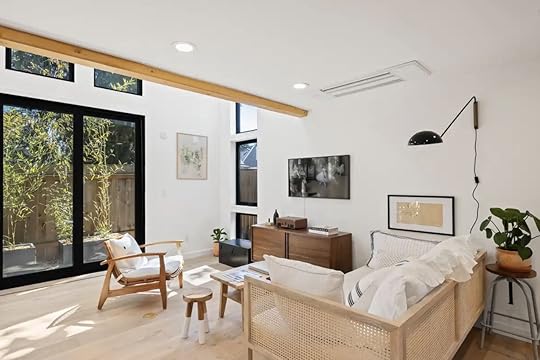
PORTLAND IS FAMOUS for its craft breweries, food truck depots and the biggest brunch scene around, so bring your appetite when visiting this casual, hipster city. The laid-back local vibe disguises its caffeine obsession, so if you love an independent coffee shop, you’re in luck. To blend in, pack your best eclectic street-style and comfy kicks, then choose a temporary pad in one of the trendiest parts of this super walkable city. Here are the best Portland Airbnbs to explore the city on foot.
We hope you love the spaces and stays we recommend! Just so you know, Matador may collect a small commission from the links on this page if you decide to book a stay. Listed prices are accurate as of the time of publication. See our full Advertiser Disclosure here.
Nob Hill charmer just steps from the streetcar
Photo: Airbnb
Portland residents proudly celebrate the city’s unofficial, “Keep Portland Weird” mantra which originated in support of local businesses and grew to represent pride for the Portlander lifestyle, freedom of expression, a unique art scene, and leisure activities. Nob Hill is an ideal locale for visitors that desire a comfortable blend of weird and refined. Walkable to independent boutiques and art galleries, this charming bungalow boasts a Superhost property manager and artsy decor. Nature lovers should check out the International Rose Test Garden at Washington Park, less than a mile away. Local nightlife includes pints and pool at McMenamins, traditional Irish music at Kells Brew Pub, and a buzzing rooftop bar at the Botanist.
Two guests, one bedroom
Price: $102 per night

Photo: Airbnb
Slabtown is a tiny but trendy pocket tucked into an artsy nook of Northwest Portland. It derived its name from an 1870s lumbermill that sold scraps of slab wood to locals as a cheap source of fuel. Today, Slabtown blends an active residential neighborhood with its industrial roots. In addition to shops and restaurants, there’s a small theater, a couple of high-octane coffee shops and several pocket-sized galleries that showcase the unique art and artifacts that Portland makers are known for. Close to it all, The Beverly blends 1875 architectural appeal with modern materials and cleanliness. Guests applaud the finishing touches like luxury linens and appreciate the quiet street.
Five guests, two bedrooms
Price: $200 per night

Photo: Airbnb
The Pearl District offers more modern accommodations for travelers that prefer clean lines and contemporary furnishings. This upscale apartment has an amazing rooftop deck and firepit which is perfect for morning coffee or evening cocktails. Recent visitors appreciate the convenient parking garage and proximity to wine bars and restaurants. Voted, “Top 10 bookstores in the World,” Powell’s City of Books is worth the hype and is just a few blocks away. Covering an entire city block, Powell’s encapsulates a microcosm of Portland culture and gives a great sense of this eclectic city in just one stop.
Four guests, one bedroom
Price: $227 per night

Photo: Airbnb
If you’re traveling with friends, this equally luxurious two-bedroom, three full bath condo sleeps up to six people, if you take advantage of the sofa bed in the loft. Guests can enjoy two balconies, free onsite parking, and a well-established host with high reviews. Located in the heart of the Pearl District, the location is unbeatable. Foodie options abound in the Pearl and range from Portland’s legendary Voodoo Donuts to traditional trattorias to tequila flights at Carlita’s, a hotspot that puts a northwest spin on classic Mexican cuisine.
Six guests, two bedrooms
Price: $192 per night

Photo: Airbnb
Portland is widely known for its creative scene and history of successful craftspeople, makers, and designers. To soak up that creative spirit, the Verdant Loft is an ideal basecamp. This five-star property is central, yet quiet and spares no expense on designer details. Some of Portland’s best people-watching is in full force at the District’s street fair held the last Thursday of each month. If your travel dates don’t coincide, the neighborhood’s amazing murals are always on display and the historic Alberta Rose Theater offers regular comedy shows, art house films, and live music performances.
Three guests, one bedroom
Price: $177 per night

Photo: Airbnb
The full squad fits into Jojo’s Blue House, just on the edge of Alberta’s action. In keeping with Portland’s pro-planet culture, the owner’s “organic everything” approach to dressing the beds and stocking the kitchen is a win. Walk to dinner on NE Alberta street or grill a feast with your friends in the back garden. The kitchen is fully stocked with entertaining in mind and the walls feature a rotating showcase of local artists whose works are available for purchase if one calls your name.
Ten guests, five bedrooms
Price: $625 per night

Photo: Airbnb
Portland’s famous food truck pods are sprinkled throughout the city. Visiting one that boasts a covered and heated seating area elevates the experience and extends the party on chillier nights. This mid-century modern house is within walking distance of Cartopia, a pioneer of the late-night food cart scene. The house sleeps six comfortably and has knock-out reviews. The décor vibes well with Hawthorn’s quirky-cool reputation and the location is central to the indie boutiques and vintage shops that cater to Portland’s creative crowd.
Six guests, three bedrooms
Price: $233 per night

Photo: Airbnb
While food trucks may rule the day and stretch long into the night, morning brunch in Portland is more than a meal, it’s an Olympic caliber event. The Division District tops the list for brunch hotspots, including Petite Provence Boulangerie & Pâtisserie. Long lines are part of the ritual, so be sure to grab a cup of joe at Portland’s infamous Stumptown Coffee to keep you company while you wait. This cheery guest house is close to the action, yet on a quiet street that is also within walking distance to Laurelhurst Park, coined a National Historic Place in 2001.
Four guests, one bedroom
Price: $261 per night
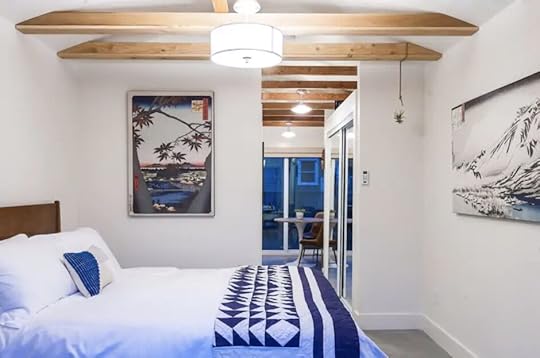
Photo: Airbnb
Bargain hunters will be thrilled to visit Zen Haus which is conveniently nestled between the competing restaurant rows of SE Hawthorne Blvd and SE Division Street. While there is a dedicated parking spot available, the best way to explore these neighborhoods Portland-style is to hop on one of the 1500 sharable bikes from Biketown. For only a few bucks a day you can whip from one boutique to the next or pedal out to the waterfront area just 3-4 miles away.
Two guests, studio
Price: $96 per night

Photo: Airbnb
Sports fans look no further. Portlanders are fanatical about their hometown soccer club, the Timbers and are wildly enthusiastic regardless of the final score. Whether you’re a Timbers Army activist or just a general sports enthusiast, you’ll appreciate this highly-rated apartment three blocks from Providence Park. If you arrive on game weekend when street parking is nuts, leave your car at home and take advantage of MAX, Portland’s light rail; it’s right down the street. Following the game, you’ll find plenty of great dinner spots and pubs in Goose Hollow. It’s the perfect representation of what Portland Airbnbs should be. 
Two guests, one bedroom
Price: $124 per night
The post The best Airbnbs in Portland’s coolest neighborhoods appeared first on Matador Network.
Do yoga at the top of the Empire State Building to run the chance to win a trip to Belize

Yoga is good for you, but sunrise yoga at the top of the Empire State Building is even better. Not only are the views of Manhattan from the top of the most famous building in the world pretty spectacular, but this particular session of downward dogs and planks can get you a free trip to Belize.
The Empire State Building, New York City‘s iconic art deco landmark has partnered up with the Belize Tourism Board to host a sunrise yoga event led by two Belizean instructors.
The sunrise yoga class will be held on the iconic 86th Floor Observatory, with unbeatable views. The class is on August 26, and participants should arrive promptly at 5:30 AM to see the sunrise. The class will begin at 6:30 AM Yoga mats will be provided to participants, and masks must be worn at all times.
During this class, seven lucky winners will have a chance to win a trip to Belize and experience a hotel stay for two for four nights. Flights are not included in the contest.
“We’ve developed a fun, holistic initiative that will spark joy and inspire visitors to explore the adventurous and soothing experiences the destination is known for,” said Belize tourism director Evan Tillet.
Tickets to the sunrise yoga class are $155 and are available for purchase on the Empire State Building‘s website. 
The post Do yoga at the top of the Empire State Building to run the chance to win a trip to Belize appeared first on Matador Network.
Everything you need to know about Europe’s Digital COVID Certificate

Traveling around Europe looks a lot different now than it once did. Previously, US citizens could board a flight on a whim, hop a few trains, and visit multiple European countries in the course of a week without even considering potential restrictions or the possibility of not being allowed to cross borders or enter venues. But that was pre-COVID-19. Now European travel means constantly checking the most recent entry requirements, worrying about your PCR test results, and most importantly: Europe’s Digital COVID Certificate. The EU’s Digital COVID Certificate is a pass that certifies your COVID-19 status. The program was implemented on July 1, 2021, as a streamlined way for countries and venues to require proof that visitors aren’t infected with COVID-19. Here’s how it works.
What is the EU Digital COVID Certificate?The EU’s Digital COVID Certificate is designed for travelers to show proof that they have been vaccinated against COVID-19, recovered from the virus, or recently tested negative for COVID-19. It’s free to use, valid in all EU countries, and comes with a scannable QR code for maximum convenience. That means you don’t have to carry around your just-too-large-for-your-wallet vaccination card.
Accepted in all EU member states, the pass is designed to coordinate the COVID-response and revive tourism by exempting holders from movement restrictions. The pass contains a QR code with a digital signature for each authorized hospital, test center, or health authority. When scanned it will show your vaccination or testing status, allowing you to cross borders and enter venues easily. Entry requirements differ slightly for each country in the EU, but most require some proof of testing or vaccination, making the pass a must-have.
The EU Digital COVID Certificate is only available to EU citizens right now, but with the recent return of international travel, it’s likely to be expanded to non-EU travelers as well.
Italy, for example, is issuing a Green Pass (also called a COVID-19 Green Certificate) — an extension of the EU certificate — to non-EU citizens. The Green Pass proves the holder has been vaccinated with at least one vaccine dose, recovered from COVID-19 within the past six months, or tested negative within the past 48 hours, and will be required to enter movie theaters, museums, indoor sports venues, and indoor restaurants in Italy. School and university staff and students will also be required to have the pass. Starting September 1, Green Passes will even be compulsory on domestic flights, trains, and some ferry services.
Some EU member countries have adopted their own version of the COVID-19 Digital Certificate. Here is what prospective travelers need to know about them.
What about France’s Health Pass?
Photo: sylv1rob1/Shutterstock
In early August France began requiring the use of a QR-based digital Health Pass for citizens to visit restaurants, bars, museums like the Louvre, tourist venues like the Eiffel Tower, and more. The passes can be used to certify a person’s vaccination status against COVID-19, or whether they’ve tested negative for COVID-19 in the past 72 hours. Many venues, including the Eiffel Tower, have been requiring proof of vaccination or a negative COVID-19 test for weeks before the official requirement took effect. The digital Health Pass simply makes it easier to show proof of vaccination without having to carry around a physical card. Acceptable vaccinations are Pfizer, Johnson & Johnson, Moderna, and AstraZeneca.
The French government has announced that US travelers already in France or who arrive by Sunday, August 15, can apply for a French health pass by submitting a copy of their official CDC vaccine card, passport, and airline tickets via email. Applications are currently being accepted from travelers 18 and older, as long as you’re already in Europe or plan to arrive by August 15. Travelers to France do not need a digital health pass to enter, though US citizens must prove that they’ve been vaccinated or tested negative for COVID-19. Once in France, US visitors can also get a temporary digital health pass, valid for just 72 hours, by getting a rapid antigen test locally.
What’s the deal with Denmark’s Coronapas?Denmark joined France as one of the first countries in Europe to launch its own COVID-19 health pass to allow non-essential businesses to reopen safely. The Coronapas is available via app or on paper, certifying that citizens have been vaccinated or tested negative for the virus over the past 72 hours. It will also certify if an individual has recovered from the virus within the previous two to twelve weeks.
The passport currently allows citizens to access non-essential businesses like salons, movie theatres, museums, indoor restaurants, water parks, and any venue with over 500 seated spectators. You also need a Coronapas to enter outdoor events like concerts and soccer matches with over 2,000 seated spectators. 
The post Everything you need to know about Europe’s Digital COVID Certificate appeared first on Matador Network.
Scuba dive to submerged forests, shipwrecks, and caverns at these US lakes

When you think about scuba diving, do you imagine white sandy beaches, swaying palm trees, and sparkling blue water? If so, you aren’t alone. Plenty of divers focus all their attention on tropical exploration. But there’s more to this adventure sport than coral reefs and warm water.
Today, more and more divers are taking the inland plunge: diving in freshwater environments far from the coast. These often challenging and rewarding destinations deliver unique opportunities for underwater photography and once-in-a-lifetime adventures in otherworldly landscapes, sometimes surrounded by dramatic backdrops like alpine forests and barren deserts. Read on for a rundown of some of the best lakes for scuba diving, plus pro tips for making the most of your time in the water.
Emerald Bay — Lake Tahoe, California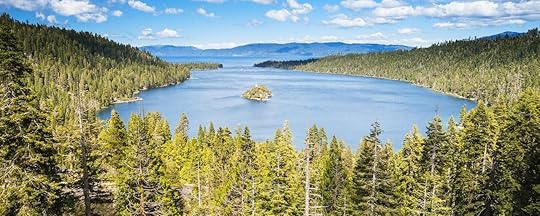
Photo: somchaij/Shutterstock
Covering nearly two hundred square miles of the borderland between California and Nevada, Lake Tahoe is home to dozens of diving areas. But Emerald Bay is, without a doubt, its most impressive underwater attraction. Divers here can explore plummeting granite walls, the remains of old cabins and submerged trees, and purposefully placed underwater artifacts along the Emerald Bay Maritime Heritage Trail.
The Rubicon Wall is Emerald Bay’s most famous site, beloved for its towering stone precipice. Explore this submerged rim’s massive boulders and gaze down into the abyss, with a sheer drop to over 1,000 feet. But, don’t forget to keep an eye on your depth here. You’ll be diving at altitude, where the effects of deep water on your body are magnified.
Spread across four dive sites in total, Emerald Bay’s Maritime Heritage Trail hosts a collection of historic recreational watercraft, launches, and barges, as well as interpretive and informative panels introducing them. The site of the old Emerald Bay Camp is also home to fascinating and forgotten objects from the past, including piled tires, sinks and toilets, and a Model A Ford. This area’s gnarled tree roots are a favorite subject among underwater photographers, thanks to the eerie effect of light cascading down through them.
Ginnie Springs, Florida
Photo: Valerijs Novickis/Shutterstock
Northern Florida is often referred to as “cave country” by divers in the know, and this world-class freshwater site is one of the region’s most spectacular cavern diving attractions, with options to suit every skill and comfort level. Ginnie Springs is also an excellent choice for divers hoping to log multiple days in the water, with tent camping and cottages for rent and a full-service dive center on the property.
Ginnie Cavern is a massive and open underwater formation that even newly certified divers can safely explore. In the upper chamber, you’ll enjoy panoramic views of naturally illuminated and highly reflective limestone. Head a bit deeper to “the ballroom” for fascinating sponge-work — a swiss cheese-like underground formation that collects divers’ bubbles for a mesmerizing mercury-like, moving-ceiling effect.
The nearby Devil’s Spring System is home to three separate natural springs: Devil’s Eye, Devil’s Ear, and Devil Spring, often referred to as “Little Devil.” Here, certified cave and cavern divers can use lights to explore deep below the earth’s surface, with breathtaking views, intricate underwater formations, and a highly unique stained glass hue created by the mix of fresh and tannin-stained river water.
These two sites are connected by the Santa Fe River, the park’s only drift dive. Search the riverbed for supersized fossils, including Pleistocene-era giant ground sloths and other massive prehistoric mammals.
Thunder Bay, Lake Huron, Michigan
Photo: Love Lego/Shutterstock
Sometimes referred to as “shipwreck alley,” this massive underwater marine preserve in Michigan is home to over 100 shipwrecks, dating from the 1850s through to the 1960s. Most were lost to collision or accidental grounding, and today tell the story of this region’s shipping and mercantile past, spanning centuries. Divers here can tour sunken hulks ranging from wooden steamboats and schooners to modern steel freighters, with depths and dive site conditions for all skill and certification levels — including technical exploration hundreds of feet below the surface. Lake Huron’s visibility can top out at over 80 feet, making it a beloved wreck diving destination for underwater photographers and videographers.
The Thunder Bay National Marine Sanctuary is best dived by boat, making it easy to hit all the park’s best wrecks in just a few days. Some of the most desirable sites here include the ruins of the Windiate, Kyle Spangler, Defiance, and Audubon — each well worth multiple tanks for internal and external exploration. You’ll find several dive centers here, each offering guided exploration and scuba courses, plus rental equipment and tank fills. And, plenty of the wrecks are easily viewed from the surface, with options to canoe, kayak, or even snorkel from shore.
Don’t leave Thunder Bay without visiting the Great Lakes Maritime Heritage Center. The exhibits, artifact galleries, and archaeological conservation lab are loaded with insights into the region, wrecks, and history. The nearby town of Alpena also hosts a free visitor center with extensive information about the marine sanctuary, shipwreck alley, and more.
Santa Rosa Blue Hole, New Mexico
Photo: rawf8/Shutterstock
This deep sinkhole is a geological anomaly in New Mexico’s high desert, famous for its stunning azure hue. It’s an excellent location for training dives with outstanding visibility and varying depths — ideal for learning and exploration by divers of all skill and comfort levels. Like most cenotes, this spring-fed pool enjoys cool water all year round, maintaining an even 63 degrees Fahrenheit even on the hottest days of the year. This makes it the perfect place to beat the summer heat.
As you descend along this cavern’s near-vertical walls, take note of its many limestone layers. This karst system formed at the end of the last ice age, when New Mexico was covered by the ocean. Sea levels dropped, exposing the coral reef and allowing it to transform into fertile land. Then, over the course of millions of years, its porous bedrock was slowly dissolved by the combination of carbon dioxide and rainfall. The result was a collapse of the earth’s surface, leading to a deep well of freshwater.
Advanced open water divers can descend to the Blue Hole’s floor for a look at the massive slabs of limestone that litter the bottom. Or they can peer into the massive vent that blocks access to the labyrinth cave system below. On your way to the surface, relax and enjoy a hover-free safety stop on one of the training platforms, and gaze up for a fascinating look at the world above water.
Clear Lake, Oregon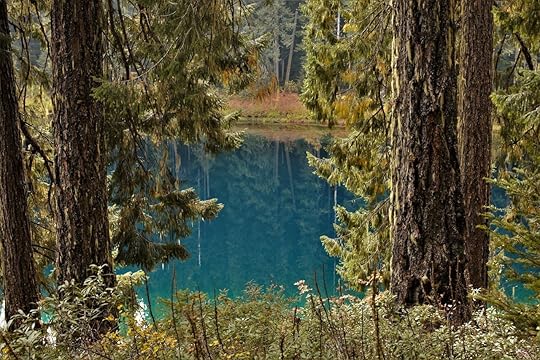
Photo: Joe Klune/Shutterstock
Have you ever dreamed of scuba diving in a submerged forest? Some of the underwater landscapes found at this mountain lake are absolutely otherworldly, allowing divers to weave around towering tree trunks, cross fields of green, grasslike algae, and peer into “potholes,” which are ice-cold springs pumping water from deep below the earth’s surface. And, with visibility well over 100 feet, you’re nearly guaranteed to take in a few stellar views.
Diving at Oregon’s Clear Lake is easy, involving just a short walk from the parking area to a convenient shore entrance and a few minutes’ surface swim out to the dive site. You’re also likely to enjoy a restful and relaxing underwater experience, as there are no motorized watercraft allowed on the lake. In addition to its fascinating topography, this site is home to freshwater fish and shrimp, with curious trout often approaching divers for a closer look.
This is one of the coldest destinations on our list, with average daily temperatures in the 30s and 40s, Fahrenheit. Drysuits and regulators designed for cold water diving are mandatory here. But, free flows and freeze-ups can still happen. So be sure that your scuba skills are sharp before taking the plunge. You should also keep in mind that this is an altitude dive, so the effects of depth on your body are more powerful.
Dutch Springs, Pennsylvania
Photo: Dutch Springs/Facebook
This spring-fed, 50-acre lake in Pennsylvania is home to a wide variety of submerged attractions, including sunken vehicles and aircraft, underwater training platforms, and unusual artifacts from the site’s mining and concrete-making past. This thriving aquifer is also home to a wide variety of wildlife, with local species like bass, perch, rainbow trout, and palomino trout, often curiously approaching divers for a closer look. And, thanks to its differently designed areas for students and certified divers, everyone can explore well within their comfort zone.
Visitors at Dutch Springs are in for a pleasant surprise when it comes to planning their stay. On-site camping and RV parking make it easy to roll out of bed and onto the morning’s dive site. And, with equipment rentals, tank fills, dining, and heated changing rooms right by the water at Dutch Springs, you’re guaranteed to find all that you need without ever leaving the park. This is a nice destination for groups with non-divers, as self-guided watersports like kayaking, paddleboarding, and snorkelling are available all day long.
While the visibility and surface conditions are generally good at Dutch Springs all year round, students will still need to keep weather and water temperature in mind. During the coldest months, this quarry can deliver quite a chill with some sites dipping as low as 40 degrees Fahrenheit at depth. This makes regulators rated for cold climates and drysuits all but mandatory. 
The post Scuba dive to submerged forests, shipwrecks, and caverns at these US lakes appeared first on Matador Network.
Matador Network's Blog
- Matador Network's profile
- 6 followers



